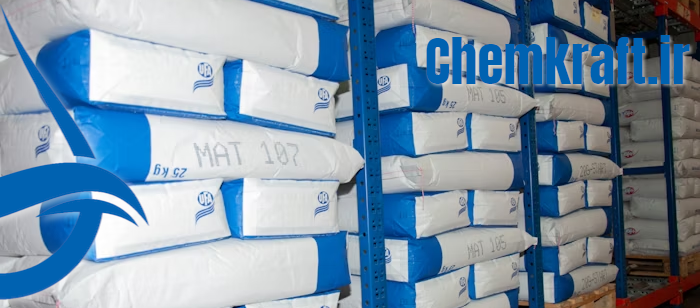THE SELECTION OF PACKAGING MATERIALS FOR CAUSTIC SODA BAGS
SAFEGUARDING CHEMICALS AND HANDLERS:
Hossein Moshiri
Introduction:
The packaging of caustic soda, or sodium hydroxide (NaOH), is a critical aspect of ensuring the safe transport, storage, and handling of this highly corrosive chemical. The choice of packaging material is paramount, considering the reactive nature of caustic soda and the need to prevent leaks, spills, and interactions that could compromise safety. This essay delves into the materials most commonly used in caustic soda bags and the rationale behind their selection, emphasizing the dual goals of safeguarding both the chemical and the handlers involved in its transport and use.
Corrosion Resistance:
Caustic soda is renowned for its corrosive properties, making it imperative to choose packaging materials that exhibit exceptional corrosion resistance. Among the materials that fulfill this criterion, high-density polyethylene (HDPE) stands out as a preferred choice. HDPE bags provide a robust barrier against the corrosive effects of sodium hydroxide, preventing degradation of the packaging and ensuring the integrity of the chemical.
HDPE Bags:
Chemical Compatibility:
HDPE is chemically inert and resistant to the corrosive nature of caustic soda. This compatibility ensures that the packaging material does not react with the chemical, preserving the quality and purity of the sodium hydroxide during storage and transport.
Strength and Durability:
HDPE bags are known for their strength and durability. This is particularly crucial in the context of caustic soda, as the packaging must withstand potential physical stress, stacking, and handling during transportation. The robustness of HDPE contributes to the overall safety of the supply chain.
Moisture Resistance:
Caustic soda is hygroscopic, meaning it readily absorbs moisture from the air. HDPE bags offer good moisture resistance, preventing the ingress of water and maintaining the chemical’s consistency. This is essential to prevent clumping or caking of caustic soda flakes.
See also Regional Competitors’ Reactions to Rapid Growth in Iranian caustic soda exports
Additional Considerations:
Sealing Mechanisms:
In addition to the choice of material, the sealing mechanisms of bags are carefully considered. HDPE bags are often sealed using methods such as heat sealing or stitching to ensure a secure closure. This prevents the escape of caustic soda flakes and minimizes the risk of exposure during handling.
Regulatory Compliance:
The selection of HDPE aligns with regulatory standards and guidelines set forth by international bodies such as the United Nations Globally Harmonized System of Classification and Labelling of Chemicals (GHS) and the International Maritime Dangerous Goods (IMDG) Code. Regulatory compliance ensures a standardized and universally recognized approach to packaging hazardous materials.
Safety of Handlers:
Ensuring the safety of those handling caustic soda is a paramount concern in the selection of packaging materials. The corrosive nature of sodium hydroxide necessitates materials that not only preserve the chemical’s integrity but also prevent potential harm to individuals in the supply chain.
Reduced Risk of Exposure:
HDPE bags, when properly sealed, reduce the risk of exposure to caustic soda flakes. The durability and integrity of the bags prevent accidental spills or leaks during transportation and handling, minimizing the potential for direct contact with the chemical.
Clear Labeling:
The use of HDPE allows for clear labeling, incorporating hazard symbols, precautionary statements, and handling instructions. This ensures that handlers are well-informed about the potential risks associated with caustic soda and can take appropriate safety measures.
Ergonomics and Handling:
HDPE bags are designed to be ergonomic and easy to handle. This consideration is crucial in minimizing the physical strain on workers involved in loading, unloading, and transporting caustic soda bags. Easy handling contributes to a safer working environment.
See also Chemkraft Caustic Soda: Setting the Standard for Purity, Packaging, and Reliability
Environmental Considerations:
While the primary focus is on the safety of individuals and the chemical, environmental considerations also come into play in the selection of packaging materials.
Recyclability:
HDPE is a recyclable material, aligning with sustainability goals. The recyclability of HDPE contributes to responsible waste management practices in the chemical industry.
Eco-Friendly Alternatives:
Companies are increasingly exploring eco-friendly alternatives to traditional packaging materials. While HDPE remains a popular choice for its performance and safety features, ongoing research is focused on developing sustainable and biodegradable options that maintain the required level of chemical resistance.
Conclusion:
In conclusion, the choice of packaging material for caustic soda bags is a nuanced decision driven by the need to safeguard both the chemical and the individuals handling it. High-density polyethylene (HDPE) emerges as a material of choice due to its exceptional corrosion resistance, strength, durability, and compatibility with the corrosive properties of sodium hydroxide. HDPE bags not only preserve the quality of caustic soda during storage and transport but also contribute to the safety of workers and comply with regulatory standards. As the industry continues to evolve, ongoing efforts to explore eco-friendly alternatives underscore a commitment to both safety and environmental responsibility in the packaging of caustic soda.
Hossein Moshiri
WA +989124311007
Comments
Post a Comment